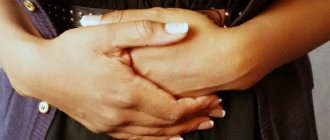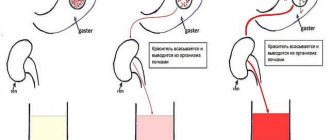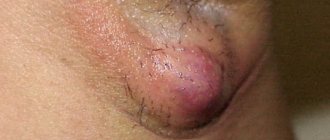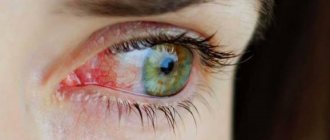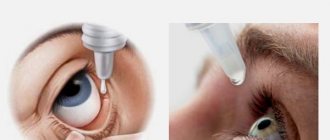Erysipelas , popularly simply “erysipelas,” is an acute inflammatory lesion of the skin of infectious origin. The disease is caused by an aggressive type of streptococcus: group A beta-hemolytic streptococcus.
Adults are more likely to suffer from the disease, but even infants are likely to get sick.
A century ago, erysipelas was considered extremely dangerous and often resulted in death. Currently, thanks to the advent of antibacterial drugs, it has become a treatable disease. However, it continues to be a serious infection that requires timely effective therapy and close attention from doctors.
Causes of erysipelas
Streptococcus can remain in the body for a long time in a “dormant” state, when its active reproduction is suppressed by the immune system. In this case, the disease will not develop. But simultaneous exposure to several unfavorable factors can lead to illness.
For an inflammatory process to occur, several circumstances must coincide:
- damage to the skin of any type: allergic, traumatic or burn;
- decreased immunity as a result of chronic diseases, fungal infections, vitamin deficiency or exhaustion of the body;
- infection of injured skin areas with beta-hemolytic streptococcus.
Body hygiene plays an important role - erysipelas occurs much more often in regions with poor sanitary and hygienic conditions.
There are observations that the disease is more typical for people of the white race.
Reasons for appearance
A streptococcal infection leads to the appearance of erysipelas on the leg. Typically, the pathogen enters the body through:
- diaper rash and cracks;
- skin damage resulting from injuries and bruises;
- insect bites or scratching;
- scratches or burns.
An old streptococcal infection can also provoke the disease. From the main focus, bacteria spread throughout the body, causing problems of varying severity. Having a healthy immune system prevents this from happening. However, if it is weakened for any reason, the risk of erysipelas on the leg increases. Frequently getting cold feet or getting too much tan can also lead to the problem. Stress or a sudden change in temperature are other factors that increase the likelihood of identifying a problem. There are a number of diseases against which erysipelas on the leg can develop. The list includes:
- alcoholism;
- overweight;
- varicose veins;
- fungal infections that are localized on the feet;
- trophic ulcers and thrombophlebitis;
- diabetes.
Most carriers of streptococcal infection do not even suspect it. Therefore, the appearance of erysipelas is often an unpleasant surprise.
Symptoms of erysipelas
The disease begins abruptly and is acute. Patients, as a rule, can even indicate the hour of its occurrence.
The onset is similar to a severe acute respiratory viral infection - the temperature rises quickly, and general intoxication of the body occurs. Chills (often shaking), headaches, nausea, vomiting, pain and aches in the back and joints are observed. In severe cases, convulsions and delirium may occur.
Skin lesions begin to develop 10-20 hours after the onset of general symptoms. It begins with itching of the skin, a feeling of tightness, and sweating. Then the skin at the site of infection begins to redden and swell, and severe erythema occurs.
A characteristic sign of erysipelas is very bright hyperemia (redness) of the affected area with clear, uneven boundaries, which are called “tongues of flame” or “geographic map.” The edges of the area are raised in the form of an infiltration ridge. The inflamed area is hot to the touch, swollen, thickened, and shiny. When pressing on it, slight pain occurs; after pressing, the redness under these areas disappears for a few seconds.
Lymphadenitis is also characteristic - hardening of the lymph nodes, decreased mobility and pain when pressed. In some patients, a pink stripe appears on the skin, which connects the inflamed area with the nearest group of lymph nodes.
What does a erysipelas on a leg look like?
Erysipelas on the leg is an affected area of bright red skin. Most often the limbs are affected. In rare cases, inflammation may occur in the genital area or torso. In the initial stage, shiny red spots appear on the leg. They spread quickly, turning into extensive outbreaks. Sometimes blisters form. The fluid in them may be clear or contain blood. In later stages of the disease, the affected area becomes covered with a crust. To better understand what a erysipelas on a leg looks like, it is recommended to study the photo.
Classification
Erysipelas is usually classified according to several parameters.
According to the frequency of occurrence of erysipelas, they are divided into 3 types:
- Primary – the first occurrence of the disease.
- Repeated – usually occurs after a certain period (a year or more).
- Recurrent - occurs periodically at indefinite intervals from several weeks to several years, with the same localization as the previous one, and is usually associated with immunodeficiency states of the body.
Particular attention should be paid to recurrent erysipelas and treatment should be directed not only to suppressing the infection, but also to the general strengthening of the body.
Classification by distribution on the body:
- Localized - has a clear focus of localization within the anatomical region of the body (face, legs, back).
- Widespread - manifested in several nearby areas of the body (for example, simultaneously on the thigh and lower leg).
- Migratory (creeping) - after healing in one part of the body, a relapse occurs in another.
- Metastatic - foci of localization are located on parts of the body remote from each other (for example, the face and lower leg).
Mixed forms may also occur. Particularly unpleasant is erysipelas of the facial skin. It causes not only physical, but also moral suffering due to the deterioration of the patient’s appearance.
According to the nature of manifestation on the skin:
- Erythematous - there is redness of the skin, itching, burning and swelling.
- Erythematous-bullous - to the previous symptoms is added the appearance of bubbles with a clear liquid, which then crack, and the disease progresses to the next form.
- Erythematous-hemorrhagic - spots of subcutaneous hemorrhage appear on the inflamed area, which cause more discomfort and require more time to heal.
- Erythematous - bullous-hemorrhagic is the most severe form, in which the skin area is affected as deeply as possible.
The last form of the disease poses the greatest danger to the patient.
According to the severity of the disease, it is divided into 3 forms:
- Mild - the temperature rises slightly, resembling a common cold, does not last long (1-3 days), and a small area of skin is affected, most often without deep structural changes (erythematous manifestation).
- Moderate severity - fever lasts more than 3 days, the temperature rises significantly, headaches, joint pain and other flu-like symptoms are possible, large areas of the skin are affected.
- Severe - fever is manifested by very high temperatures, lasts more than 5 days, large areas of the body are affected with hemorrhagic and bullous manifestations.
Negligence towards the mild stage and lack of adequate treatment leads to the progression of the disease and the occurrence of severe forms of the disease.
Therefore, if you suspect erysipelas, you should immediately consult a doctor.
Treatment with folk remedies
Many people, on a subconscious level, are accustomed to trusting healers more than certified specialists, preferring to be treated with folk remedies at home without outside help. This is especially often done by families in which the rarest secrets of traditional medicine have been passed on for centuries. They not only know how to treat erysipelas on the leg with folk remedies, but also solve much more complex problems.
Don't try to talk about infectious diseases
If you also decide to take the side of adherents of traditional treatment for erysipelas on the leg, then before doing anything, be sure to consult with a specialist and undergo an examination. This will partially eliminate the possibility of irreparable harm to health caused by home treatment. And remember that the use of ill-conceived methods of treating erysipelas with folk remedies in most cases leads to the formation of a recurrent form of the disease.
Folk decoction for erysipelas
For erysipelas on the leg, not only ointments applied to the swollen area will help, but also antiseptic decoctions for internal use. To prepare a decoction for erysipelas on the leg, take:
roots of calamus and burnet; eucalyptus leaves; nettle; yarrow; licorice; cottonweed.
Burnet root will relieve inflammation
Important: crushed dry ingredients should be selected in equal quantities.
Pour a tablespoon of this mixture into 450 ml of boiling water. After the antiseptic decoction has infused, strain it. Drink the decoction an hour before meals four times a day. You need to drink 100-110 ml of decoction at a time.
Attention: to prevent the development of infectious diseases caused by streptococci, keep your skin clean and promptly treat wounds with antiseptic agents.
Compress with plantain
Look for an anti-inflammatory - take psyllium
Folk remedies for erysipelas on the leg, prepared from plantain, have proven themselves very well. This plant has excellent wound healing and anti-inflammatory effects. It disinfects damaged areas of the skin, promoting faster healing of wounds. To prepare it, we don’t need anything other than plantain. In order for the plant to quickly cope with erysipelas, before applying large medicinal plantain to the swollen skin, it needs to be crushed. Better yet, grind about five to six sheets of disinfectant herb in a blender.
For one compress you need about six plantain leaves. Apply the pulp obtained using a blender or meat grinder to the inflamed area and bandage your leg. Compresses need to be changed three times a day.
Raisins against erysipelas
Raisins can be used not only for baking Easter cakes and muffins. It will also make a good folk remedy for erysipelas.
Take 200 g of light raisins and rinse them in cold water. Drain the dirty water and pour in new water, leave the raisins in it for 10 minutes. Let the berries dry. Crush the washed and dried raisins in a mortar, turning them into a homogeneous mass.
Now you should divide the raisin pulp into two parts. Both parts should be placed on a gauze napkin and adjusted to the erysipelas with an interval of half an hour. Do the procedure three times a day. Duration - until the lower extremities are completely cured of erysipelas.
Stock up on life-saving light raisins
Attention: there is no need to tape gauze to your leg!
We scare the face with chalk
If you pour chalk on the erysipelas, as well as on the tissue surrounding the affected area, it will begin to absorb moisture, thereby killing germs. There is nothing unnatural here, because we all know that microorganisms need a moist environment for normal functioning. It is logical that by excessively drying the skin, we will create unfavorable conditions for streptococci to live and reproduce.
Regular chalk will get rid of harmful microorganisms
Chalk, plantain and various decoctions are good old-fashioned remedies against streptococci, but it is better to use antibacterial therapy to quickly and effectively treat erysipelas. Of course, no one can stop you from using folk remedies for erysipelas on your leg. But, since we live in a modern society, archaic home methods for treating erysipelas should be replaced with adequate drug therapy (antibiotics, antihistamines and non-steroidal anti-inflammatory drugs). But in severe cases of erysipelas, the patient may require chemotherapy, blood transfusions, and the prescription of biostimulants. Patients are often prescribed vitamin complexes and undergo ultraviolet irradiation (for erythematous erysipelas). If the correct comprehensive treatment is carried out, you can count on quick relief from erysipelas and a complete restoration of the body’s performance.
Erysipelas, or erysipelas, is an acute disease accompanied by inflammation of the skin, fever and intoxication.
The cause of the disease is streptococci that penetrate through microtraumas of the skin into the lymphatic vessels, thus causing inflammation.
Erysipelas is an infectious disease that primarily affects the skin. Its course is accompanied by symptoms of general intoxication and frequent relapses. The source of infection with this disease is a person who is a carrier of streptococcus, the causative agent of erysipelas. The infection can enter the body through minor damage to the skin and mucous membrane, for example, scratches, cracks, etc.
The main condition for the occurrence of the disease is a decrease in the body’s immune forces under the influence of unfavorable factors.
Women and older people are most often affected by the disease. After an illness, immunity does not arise.
The onset of the disease is characterized by an increase in body temperature to 39-40 ° C, chills, and symptoms of general intoxication. In this case, the patient complains of weakness, headache, muscle pain, nausea, and vomiting. A few hours after the onset of the disease, pain, itching, burning sensation, swelling and redness of the skin are noted in the affected area. The red spot in the affected area quickly increases in size.
The main areas affected by erysipelas are the face (nasolabial folds, bridge of the nose, cheeks, corners of the mouth) and the scalp. Very rarely, inflammation can occur on the legs and other areas. In some cases, there may be the formation of blisters filled with liquid contents at the site of the red spot, which burst, followed by the formation of crusts. Skin changes persist for 5-15 days.
Symptoms:
the disease usually begins acutely and occurs at a high temperature with chills and fever, which are accompanied by headache, severe weakness and muscle pain, nausea and vomiting. A small reddish or pink spot appears on the skin at the site of the lesion, which then spreads over the surface of the skin.
What's happening?
The spot rises above the rest of the skin and has clearly defined boundaries with jagged edges. The spot is hot and painful to the touch. When skin detaches, blisters may form. The disease is accompanied by edema. The inflammation lasts from a week to two, gradually decreasing and peeling off. The bubbles burst and crusts form in their place.
Immunity does not develop after an illness, and erysipelas often recur.
Complications of erysipelas include abscesses, cellulitis and ulcers, thrombophlebitis, myocarditis, nephritis and rheumatism.
What to do?
Treatment for erysipelas is prescribed by a doctor.
Recipes.
Traditional medicine for the treatment of erysipelas recommends:
• do not wash with water or wet the affected area of skin at all;
• drink milk;
• lubricate the affected areas of the skin with pork fat or propolis;
• apply bird cherry bark to the affected areas. Prevention of erysipelas - prevention of skin injuries, careful adherence to hygiene rules.
The disease is expressed in bright redness of the skin with slight swelling. It usually begins with severe chills and fever; redness may appear near a contaminated wound and even in a clean area. The spot burns, itches and seems to be creeping, gradually expanding.
If erysipelas has formed near a wound, then it is usually treated with ichthyol. The wound itself should be washed daily with a solution of manganese, and the reddened area should be lubricated with ointment, and another 2 to 5 centimeters of unaffected skin should be covered in order to stop the spread of the disease.
It is good to sprinkle the face on the face with a thick mixture of pure chalk and rice starch. They need to be finely crushed and sifted so that large particles do not irritate sore spots. On top of the powder you need to wear a mask made of blue thick paper with holes for the eyes to protect your face from the sun's rays. Of course, you can’t wash your face.
On the fifth day, the disease reaches its highest development, after which recovery begins.
When you have an erysipelas on your face, you must definitely draw in water with manganese or boric acid into your nose, and lubricate the abrasions in the nose with lapis, since most streptococci accumulate and remain there.
Folk remedies for erysipelas
1. Chalk, red cloth.
In the morning, before sunrise, sprinkle the area affected by erysipelas with clean, finely sifted chalk. Place a clean red woolen cloth on top and bandage it all. The next morning, repeat the same procedure again, changing the chalk. After a few days, the erysipelas goes away. Carry out the procedure once a day and always before sunrise.
2. Natural bee honey, a piece of natural red silk, the size of your palm. Grind into small pieces. Mix with natural bee honey, divide this mixture into 3 parts. In the morning, an hour before sunrise, apply this mixture to the area affected by erysipelas and bandage it. The next morning, repeat the procedure again. Do this every day until recovery.
3. Chalk, powder - 1 part. Sage, leaf powder - 1 part.
Mix everything well. Pour the mixture onto a cotton cloth and tie it to the affected area. Change 4 times a day in a semi-dark place, away from direct sunlight.
4. Rye flour.
Finely sifted rye flour is sprinkled on the sore spot. The top is covered with blue sugar wrapping paper and everything is bandaged. Do it in the morning an hour before sunrise. Change the bandage once a day before sunrise.
5. Frog caviar.
In the spring, collect frog eggs, spread them in a thin layer on a clean cloth, and dry them in the shade. In case of erysipelas, lightly soak the caviar and apply it to the sore spot overnight. After 3 such procedures, erysipelas goes away. It is considered a radical remedy for erysipelas. Store caviar in a cool, dry place for 6 months, no more.
6 Apply fresh plantain leaves to the sore spot.
7. Lubricate the area of skin affected by erysipelas with a cloth in kerosene, after ten minutes wipe off the kerosene, do this for 2-3 days.
Inflammation of the eyes due to erysipelas
8. Datura (leaves and seeds).
20 g of dope seeds or leaves per glass of boiling water. Leave, covered, for 30 minutes, strain. Dilute half and half with water. Apply lotions for eye inflammation. Vodka tincture of seeds or leaves. Dilute 1 teaspoon of tincture in 0.5 cups of boiled water. Use for lotions.
Treatment with honey
Grind a palm-sized piece of natural red silk into small lumps. Mix with natural bee honey, divide this mixture into 3 parts. In the morning, an hour before sunrise, apply this mixture to the area affected by erysipelas and bandage it. The next morning, repeat the procedure again. Do this every day until recovery.
Conspiracies
Mix rye flour with honey and elderberry leaves. Apply the resulting mass as a compress, saying:
- The first time, the first hour, they planted the mug, they watered the mug, the mug did not rise, it went away! A second time, a second hour... And so on up to twelve times, up to twelve hours.
- “God walked through a pig den and carried three faces. One dries, the other withers, the third is driven off the body. Mother in labor, red maiden, do not walk on white legs, do not walk on blue veins, do not make wounds on white legs, do not make wounds on blue veins. I am a word, and God is a help. Amen".
Ultraviolet light treatment
The affected area is irradiated with light.
Disease prevention: maintaining personal hygiene rules, treating fungal skin diseases, treating streptococcal diseases, preventing injuries and abrasions of the feet.
Clay treatment for erysipelas
Apply cold clay to the inflamed area. Clay cannot be heated, as when warmed it loses its healing properties.
Treatment with rye flour
Finely sifted rye flour is sprinkled onto the affected area, blue wrapping paper is placed on top, and everything is bandaged. The procedure is carried out early in the morning before sunrise.
Recipe No. 1
2 tbsp. spoons of dope seeds, 250 ml of water.
Cooking method.
Pour boiling water over Datura seeds, leave for 30 minutes, strain, then dilute with water in a 1:1 ratio.
Mode of application.
Use as lotions.
Recipe No. 2
1 tbsp. spoon of sage leaves, chalk (powder).
Cooking method.
Mix the ingredients, pour the mixture onto a cotton cloth.
Mode of application.
Place a cloth on the affected area and bandage it. The procedure should be carried out 4 times a day.
Treatment with bee products
Once cut a piece of silk into small pieces, mix with honey. Divide the resulting mixture into 3 parts.
In the morning, before sunrise, apply the mixture to the area affected by erysipelas and bandage it. Do it once a day for 3 days.
Chalk treatment
pure chalk, red woolen cloth.
Mode of application.
In the morning, sprinkle the affected area with clean chalk, then put red woolen cloth on top and bandage everything. The next day, repeat the procedure, changing the chalk. The procedure is carried out once a day before sunrise. After 5-6 days, the erysipelas goes away.
Hunger treatment
With complete fasting, erysipelas disappears in an average of 3 days.
Which parts of the body are most often affected by erysipelas?
Let's look at which areas of the body the inflammatory process most often occurs:
- Legs in the shin area. Due to poor circulation or insufficient lymphatic drainage, stagnation occurs in this part of the body, and infection accumulates. Therefore, erysipelas of the leg is one of its most common types.
- Skin of the face and head. This localization is facilitated by congestion caused by ENT diseases.
- Torso. The risk of erysipelas increases in areas of excessive sweating and abrasions, as well as on the surface of scars.
- Hands. The most rare lesion, since it is the most mobile part of the human body, which prevents the occurrence of stagnation.
Diagnostics
Since the symptoms of erysipelas are clearly manifested and specific, the doctor can make a diagnosis even during the initial examination based on the following symptoms:
- sudden manifestation of the disease in the form of a feverish state with signs of acute intoxication of the body;
- characteristic skin manifestations;
- enlarged lymph nodes;
- muffled heart sounds, rapid heartbeat;
- decrease in pressure.
Special laboratory diagnostics are not needed. But to confirm the diagnosis, you should pay attention to the following parameters of a general blood test:
- ESR, as in any acute inflammatory process, is more than 20 mm/hour;
- increased number of leukocytes;
- decreased number of red blood cells;
- decreased hemoglobin, especially with hemorrhagic manifestations.
It is also recommended to determine the strain of streptococcus in a laboratory to select the most effective treatment regimen.
Erysipelas of the skin - treatment
The main method of treatment for this disease is medication.
The following drugs are used:
- Antibacterial (antibiotics) are the main element of therapy. Accepted for about 2 weeks.
- Anti-inflammatory and antipyretic - necessary to reduce fever.
- Painkillers – used both locally and orally.
- Antihistamines - needed to relieve allergy-like reactions at the site of inflammation.
- Non-steroidal anti-inflammatory drugs - to reduce the intensity of inflammation and relieve pain.
- Ointments and creams directly in areas of severe skin damage.
- Antiseptic dressings - necessary for deep skin lesions;
- Steroid or immunomodulatory drugs are prescribed for severe disease.
Most often, several classes of drugs are prescribed at once, since a complete cure requires an integrated approach.
It takes up to 2 weeks to relieve the acute phase. But even after this you should not stop treatment.
The skin in areas that have been inflamed is very vulnerable in the next few weeks and may peel. In no case should the affected areas be exposed to intense sunlight for at least a month after the acute phase has ended. Additional moisturizing with special ointments and creams is also necessary to completely restore the skin structure.
After the acute phase has passed, physical therapy is recommended.
Physiotherapeutic methods:
- ultraviolet radiation - to inhibit the growth of streptococci;
- electrophoresis - for more effective administration of drugs;
- UHF – to improve lymph flow, blood circulation and local immunity.
Occasionally it is necessary to resort to surgical treatment. It becomes necessary for deep lesions of the skin.
Particular attention should be paid to recurrent erysipelas. Treatment of its acute phase does not differ from treatment for the primary disease. After acute symptoms are relieved, an additional course is required to restore immunity and get rid of streptococcal infection.
Treatment of uncomplicated forms of the disease is carried out on an outpatient basis, under the supervision of the attending physician. Severe cases may require hospitalization of the patient.
Self-medication can be deadly due to the potential for severe complications.
Erysipelas: what is it?
Erysipelas of the foot is an infectious disease caused by the activity of hemolytic streptococci. Inflammation and deformation usually affect a limited area of the skin. The course of the disease may be accompanied by intoxication. Most often, the disease occurs in men and women over the age of 45. However, it can also appear in children. For a child under the age of 1 year, erysipelas on the leg poses a mortal danger.
The disease is quite common. It ranks fourth after acute respiratory infections, hepatitis and gastrointestinal tract infections. There are several varieties of erysipelas. The list includes:
- Erythematous form. This type of disease is characterized by redness of the affected area. In this case, the erythema rises above the skin and has clear boundaries. It is uniform in color and has an irregular shape. Subsequently, inflammation may be added to the overall picture.
- Erythematous-hemorrhagic form. Almost copies the previous one. The only difference is that hemorrhages occur on the affected area of the skin.
- Erythematous-bullous form. At the first stage, the type of disease is no different from the erythematous form. However, after two to three days, the top layer on the affected area begins to peel off. Then bubbles appear, which are filled with a clear liquid. After they burst, brown crusts appear in their place. What is underneath is directly related to the treatment. If the patient was provided with timely, qualified assistance, after the scabs fall off, smooth pink skin will appear underneath them. If timely treatment is not carried out, there is a possibility of painful lesions. Subsequently, they can turn into trophic ulcers.
- Bullous-hemorrhagic form. Externally, this type of disease is similar to the previous form. The difference is that bubbles appear filled with liquid that contains blood.
Erysipelas can be systematized by symptoms. So, depending on the severity, the lesion can be mild, moderate or severe. There are different types of forms based on the number of times they appear. There are primary, recurrent and repeated erysipelas.
Complications
Erysipelas is a treatable disease, but without adequate treatment and with concomitant diseases, it can lead to serious complications.
Typical types of complications with erysipelas:
- Necrosis is the death of the skin in the affected area. If the necrotic areas are extensive, surgery may be necessary.
- An abscess is a purulent inflammation. It occurs in the bullous form and manifests itself in the appearance of subcutaneous purulent foci. Their prompt removal is mandatory.
- Phlegmon is a large purulent focus. Also requires surgery.
- Purulent phlebitis is the formation of purulent foci around the vessels of the limb. As a result of pressure on the vessel, blood flow decreases, which leads to oxygen starvation of surrounding tissues. May cause extensive necrosis.
- Sepsis is the entry of a large number of streptococci into the bloodstream. Deadly condition.
- Damage to the heart muscle - occurs when streptococci enter the myocardium.
- Purulent meningitis - if the area of inflammation is located on the head and has entered the purulent stage, streptococci can enter the spinal cord and cause meningitis.
- Deterioration of vision - when erysipelas are localized in the eye area, due to edematous phenomena, the hydration and blood supply to the eyeball is disrupted. May lead to irreversible loss of visual acuity.
The following factors significantly increase the risk of complications:
- fungal infections;
- diabetes;
- lymphostasis;
- phlebeurysm;
- swelling of various origins;
- hypovitaminosis or exhaustion of the body;
- immunodeficiency;
- severe intoxication of the body.
If there is at least one of the risk factors, a more serious attitude to treatment and more careful monitoring by the attending physician is required.
Prevention of complications and relapses
The disease has clearly defined symptoms. If two or more symptoms are detected, you must immediately consult a doctor and begin treatment immediately. Strict adherence to recommendations and implementation of all necessary procedures will avoid complications.
It is important to complete treatment even after the acute manifestations of the disease have been eliminated. It is especially important not to stop the course of antibiotics before the prescribed time, as this leads to chronicity of the disease and the development of addiction to this type of antibacterial drugs - next time they may be useless to you.
To prevent a relapse, it is important to maintain good blood and lymph flow in areas of inflammation, and to monitor the cleanliness and dryness of the skin.


